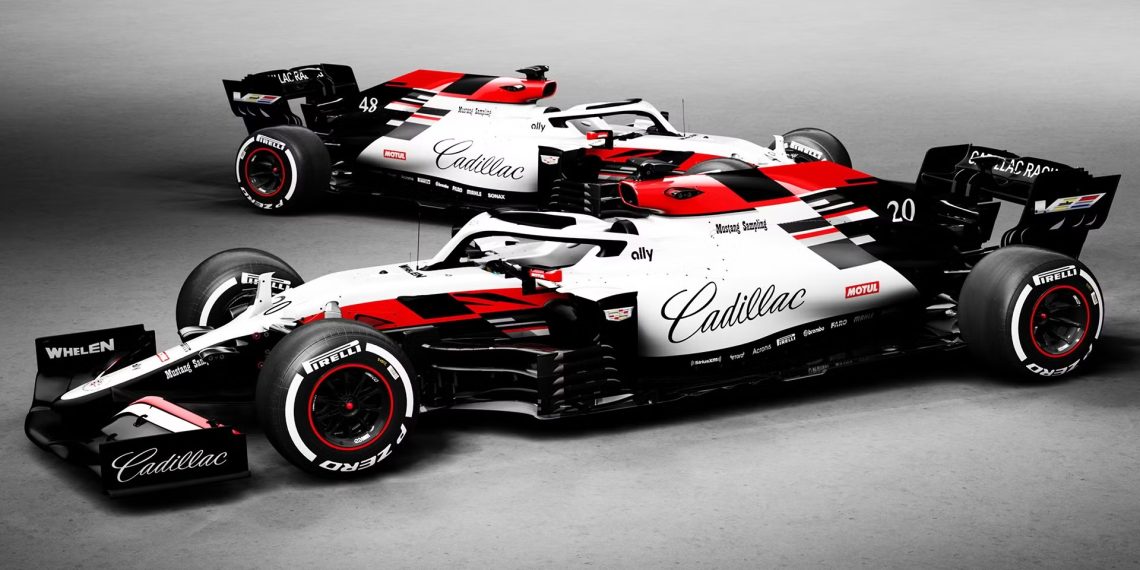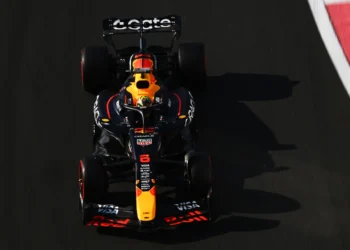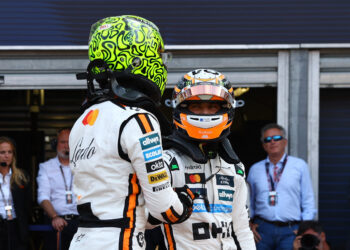The winds of change are sweeping through Formula 1 as General Motors’ Cadillac prepares to join the grid in 2026, signaling one of the most ambitious entries the sport has seen. With a monumental task ahead, Cadillac aims to transition from a Ferrari-powered outfit into a full-fledged works team by 2028, cementing its place in what Ferrari’s Laurent Mekies has dubbed “a battle of giants.”
A New Era of Manufacturer Dominance
The Formula 1 grid is rapidly becoming a battleground for automotive titans. Ferrari, Mercedes, Renault (via Alpine), Audi, Honda (through Aston Martin), and even Red Bull with its Ford-backed power units have firmly staked their claims. Cadillac’s late arrival reflects both the challenge and allure of joining this elite club.
“Even Haas is also linked to a car manufacturer [Toyota] now,” Mekies remarked last year, highlighting the growing trend of manufacturer involvement. The only true exceptions? Williams and Alpine. But even Alpine’s Renault backing provides deep resources, leaving few teams untethered to automotive giants.
A Rocky Road to Acceptance
Cadillac’s journey to F1 has been anything but smooth. Its initial bid alongside Andretti Global was rejected in January 2024, with Formula 1’s governing bodies questioning its competitiveness and ability to add value to the sport. The fallout led to a U.S. House Judiciary Committee investigation into potential “anticompetitive conduct” by F1.
This time, Cadillac’s revised approach—shedding Andretti Global and spearheading its own fully-fledged entry—has seemingly won favor. As Williams’ James Vowles noted, the new effort demonstrates “serious commitment and investment.”
Drivers, meanwhile, have expressed excitement at the prospect of a 22-car grid. Ferrari’s Charles Leclerc described the expansion as “exciting,” adding, “That will obviously give more opportunities to very talented young drivers that are dreaming to get into Formula 1.”
The Cadillac Blueprint: From Ferrari Power to Self-Sufficiency
The team’s initial foray will begin with Ferrari power units, offering a crucial acclimatization period. However, Cadillac has made its long-term intentions clear by announcing GM Performance Power Units LLC, which will develop proprietary engines by 2028. Led by Russ O’Blenes, this initiative underscores Cadillac’s ambition to become a dominant force in the sport.
A new factory at Silverstone has already been established, and key personnel from Renault’s successful past—including those who contributed to Fernando Alonso’s championship victories—have been recruited. Aston Martin’s Alonso welcomed the effort, saying, “A new team is never an easy task, but I think they will be well prepared and they have the right people.”
Dilution Fees and F1 Politics
The financial cost of Cadillac’s entry remains a hot topic. Initial reports suggested an anti-dilution fee of $450 million, but Vowles clarified that no fixed amount has been ratified. This uncertainty hasn’t deterred GM, whose deep pockets and commitment have silenced many of their early critics.
The broader question remains whether this influx of manufacturers risks diluting the essence of the sport. As Aston Martin’s Mike Krack observed, Cadillac faces a “monumental task” to deliver on its promises and compete with the established giants.
A Bold Future Awaits
The stakes for Cadillac’s entry couldn’t be higher. While F1’s current manufacturers enjoy entrenched advantages, GM’s resources and strategic planning provide a unique opportunity to disrupt the status quo. Success won’t come overnight, but as Mekies noted, the sport is shifting toward a clash of automotive behemoths. In this arena, Cadillac’s bold move could either redefine its legacy—or serve as a cautionary tale.
As preparations ramp up for 2026, the world will be watching: Can Cadillac rise to the challenge and prove that America’s automotive pride belongs on the global stage?










